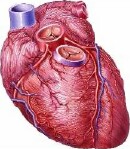Priming Heart Before an Attack Could Limit Damage
Animal study shows preconditioning cardiac cells helps organ better tolerate loss of blood flow.
By Carolyn Colwell
HealthDay Reporter
|
E-mail this article
Subscribe to news
Printer friendly version
|

(SOURCES: Karyn L. Butler, M.D., associate professor, surgery, division of trauma/critical care, University of Cincinnati; Roger Hajjar, M.D., director, Cardiovascular Research Center, Mount Sinai Medical Center, New York City; Stephen Lahey, M.D., professor, surgery, SUNY Downstate Medical Center, and division director, cardiothoracic surgery, Maimonides Medical Center, New York City; January 2008, American Journal of Physiology: Heart and Circulatory Physiology
)
THURSDAY, Jan. 10 (HealthDay News) -- Just as daily runs can prepare you to survive a marathon, blocking blood flow to the heart for brief spells could condition cardiac cells to better withstand the damage of a heart attack, a new animal study from the University of Cincinnati suggests.
Ultimately, if validated in humans, these findings could lead to a drug that "could be given to a patient where the heart is in stress, and it could [then] tolerate that stress better," explained study leader Dr. Karyn L. Butler. Such a drug might also protect the hearts of people with known cardiac problems who are about to undergo surgery.
The findings show a new way to make use of a long-known phenomenon in which short-lived restrictions on blood flow, known as ischemia, could strengthen the heart's ability to recover from a heart attack, Butler added.
This preconditioning is "almost a form of exercise for the cell," explained Butler, who is an associate professor of surgery at the university. "For example, if you are going to run a marathon, you don't start with 20K, you start with a little bit at a time. If the heart is exposed to a brief period of ischemia -- maybe five minutes or a shorter period of time, and then exposed to a long period of time which we know as a heart attack -- hundreds of animal as well as human studies show that the heart can tolerate a heart attack better. It's almost as if the cell gets used to it and can prepare itself for handling a longer period of reduced blood flow."
Butler and her team shared two new insights into this protective, preconditioning phenomenon. They've identified in animals the molecular mechanisms behind preconditioning in a healthy heart, and they've demonstrated that the activating factor can be transferred to a healthy heart.
Their study examined the mechanism of a signaling pathway known as JAK-STAT in normal hearts, Butler explained. The next step, she said, will be to see if activating the same mechanism can work in hearts that have been exposed to high blood pressure.
The American Journal of Physiology: Heart and Circulatory Physiology was expected to publish the study in its January issue.
Butler cautioned that the findings are preliminary. She said it is especially important for anyone experiencing ischemia, such as angina, to get medical treatment as soon as possible. "This is obviously investigational work not reproduced in humans," she explained. "I'm not saying stay home and take your nitro and aspirin, and have your angina, and you'll be fine. Immediate medical attention is still the standard of care for patients with heart disease."
"As far as scientific importance, this is a blockbuster," said Dr. Stephen Lahey, director of cardiac surgery at Maimonides Medical Center in New York City. He suggested that, if the findings are validated by further research, the delivery of the protective factors of the JAK-STAT pathway could be very useful in heart surgery.
For example, if a drug were developed based on the findings, it could be added to the solution that currently is used when stopping a heart during open heart surgery, which would buy more time for the surgeon to complete his work, Lahey explained. Heart surgeons are always operating on the "razor's edge" between having enough time to make needed repairs and the deadline for restarting a heart to prevent fatal damage, he noted.
"Maybe this will be an important arrow in the cardiac surgeon's quiver to protect your heart during surgery and transplants and angioplasty," Lahey said. He added that there is "a possibility this could have widespread use and have a great impact on preserving heart muscle." However, the concept would have to go through very rigorous testing for a long time before it would be in clinical use," Lahey added.
Dr. Roger Hajjar, director of the Cardiovascular Research Center at Mount Sinai Medical Center in New York City, felt the findings were more limited. He said the question is whether the preconditioning occurs "because of the heart or something in the blood that occurs after multiple ischemic attacks." There could be other pathways that also are activated, he said, and it may be there is a cumulative, protective effect from all of these pathways being activated.
More information
The American Heart Association has more on advances in heart disease research. 
Copyright © 2008 ScoutNews, LLC. All rights reserved. 
HealthDayNews articles are derived from various sources and do not reflect federal policy. healthfinder.gov does not endorse opinions, products, or services that may appear in news stories. For more information on health topics in the news, visit the healthfinder.gov health library.